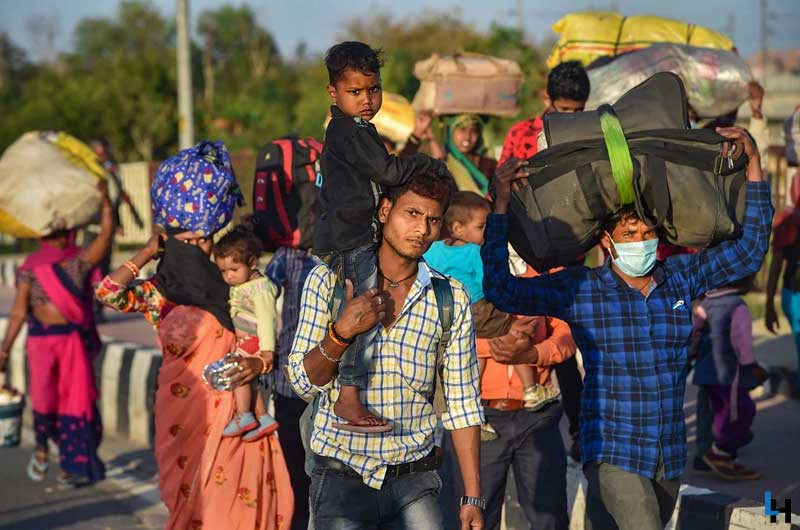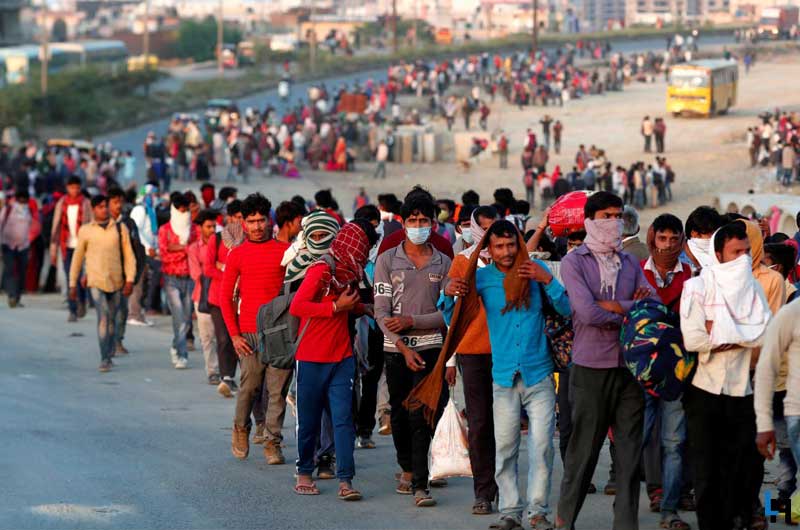Last Sunday, a companion of mine was in a gathering driven by authentic business from Delhi to Lucknow. As I have not seen a separate report of a lengthy drive and I am secured down in a regulation region, I requested that he take notes on what he saw. He was not permitted to stop and meet anybody. Up and down the 416 km course,
He saw vagrant specialists and their families strolling to their homes, the vast majority of them were in gatherings, some alone. The old limped upheld by durable sticks; some more youthful men, soaked in sweat, for it was a bright Sunday, conveyed overwhelming packs lashed to their backs; others conveyed sacks on their heads. Infants and small kids were held in the arms of their folks, more seasoned youngsters caught their folks’ hands.
At a town called Brijghat in the Hapur area, the police abused youthful cyclists attempting to move beyond a blockade. My companion’s vehicle was halted at barricades and checked by the police whenever he crossed the outskirts between areas. All dhabas and shops were shut. Drinking water was just given at two spots. In one place, Sikhs had set up langar and were providing food to the walkers. Inside Lucknow, the police checking was strengthened; however, walkers were still to be seen on the ring street.
Almost a month and a half after the first lockdown was declared, this was the scene out and about between India’s capital and the capital of its most crowded state. Vagrant specialists, excused by managers, getting a charge out of no assurance from their legislatures, regularly tossed out of their convenience by their proprietors,

In need of food transport and cash, driven by distress to walk home. It is a scene many have portrayed as suggestive of the movement at Partition. This is the result of the biggest and probably the strictest lockdown on the planet implemented during the coronavirus illness emergency — a lockdown that has been generally commended globally.
Why has the objection against this enduring incurred on people who are over 90% of India’s workforce been so quiet?
It is, I accept, to some degree in any event, because those in a situation to speak more loudly have not distinguished themselves with the individuals who are languishing. This thought came to me from re-perusing DH Lawrence’s once-dubious novel Lady Chatterley’s Lover during the lockdown. Set in the new midlands of Britain between the two World Wars, the book is the tale of a titled lady’s adoration for the regular worker’s gamekeeper on the home of her better half, a mine proprietor.
One of the topics in the absence of commitment and sympathy between the high society and the common laborers as they were known back then. During a line with her significant other over his disposition to the hirelings, Lady Chatterley says, “I’d have you know about individuals.” He answers, “And I’d have you somewhat less mindful of that individual and somewhat more mindful of the individuals who are after the entirety of your sort and class.” One of the gamekeeper’s companions asks Lady Chatterley, “Do the high societies feel any compassion for working men as they have nothing before them, till they drop. Do they identify?”
The transient specialist emergency has indicated the importance of that question in present India. The market analyst Jean Dreze, who has devoted his life to the investigation of neediness and imbalance, “The lockdown has been similar to capital punishment for the oppressed,” and kept up that “the strategies made to contain the pandemic have been made or impacted by a class of individuals who give practically no consideration to the ramifications for the oppressed.” Nikhil Dey, alongside Aruna Roy, has worked for some, numerous years enabling specialists and ranchers, but this absence of compassion is considerably more gruffly
